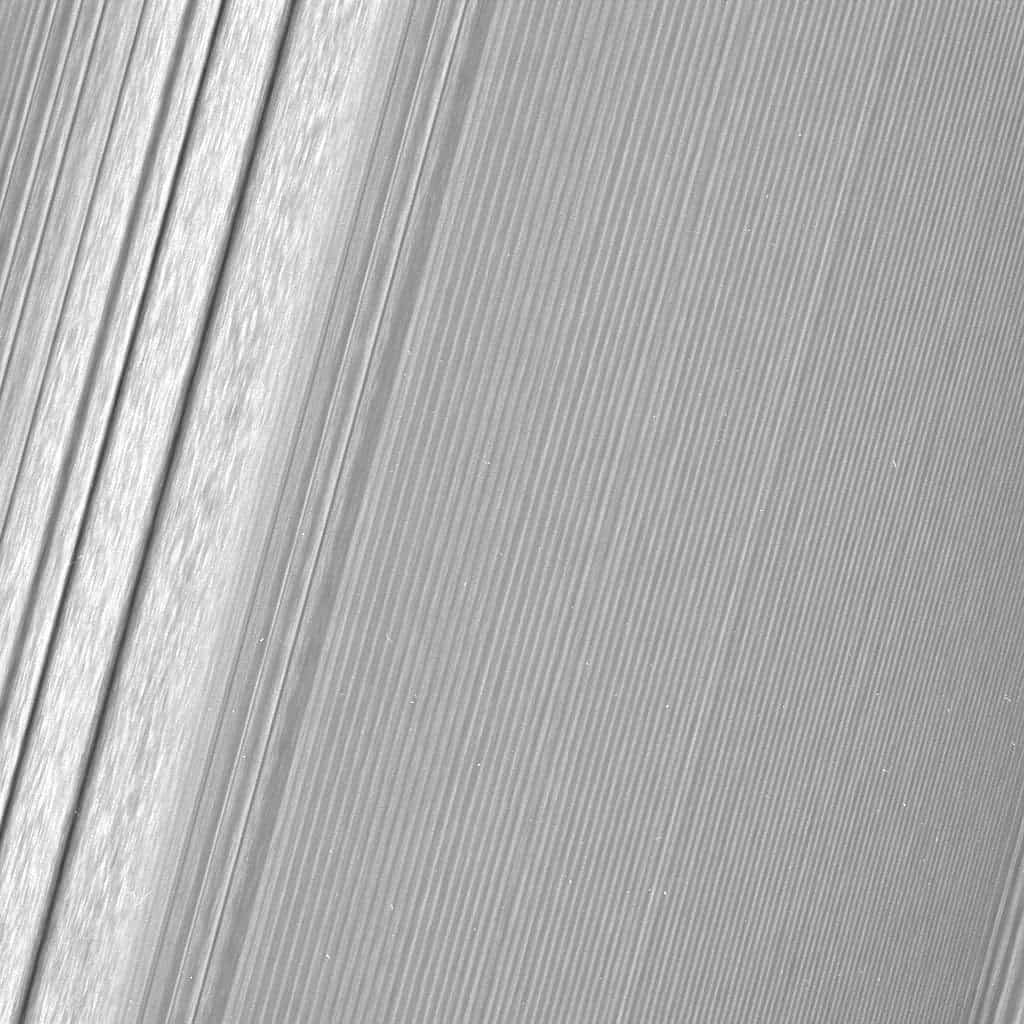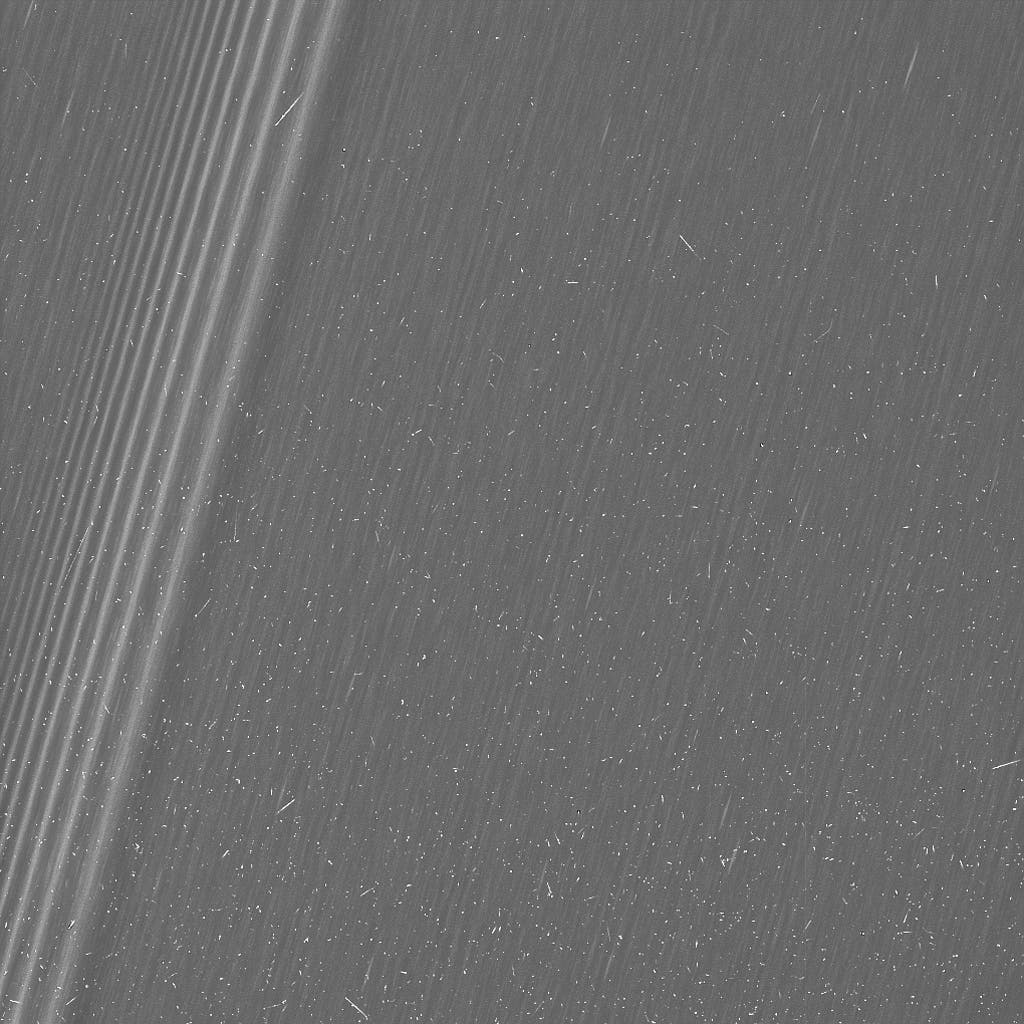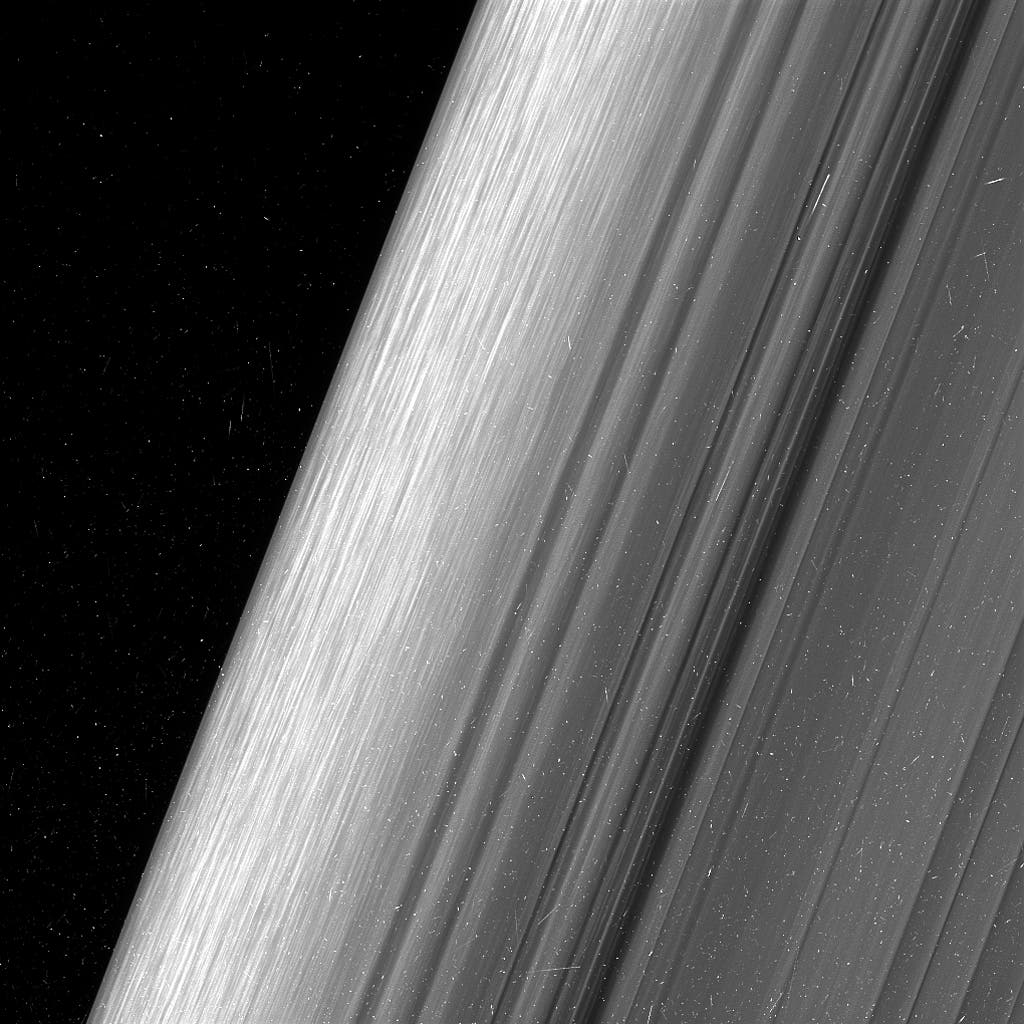
This Cassini image features a density wave in Saturn’s A ring (at left) that lies around 134,500 km from Saturn. Density waves are accumulations of particles at certain distances from the planet. This feature is filled with clumpy perturbations, which researchers informally refer to as “straw.” The wave itself is created by the gravity of the moons Janus and Epimetheus, which share the same orbit around Saturn. Elsewhere, the scene is dominated by “wakes” from a recent pass of the ring moon Pan. Credit: NASA
This week the folks at NASA treated us with some of the finest eye candy there is. Some of the closest pictures of Saturn’s rings were beamed back by the Cassini probe on December 18, 2016 with incredible detail. Some of the features pictured are as small as 0.3 miles (550 meters) across, a stunning thing when you realize the images were taken 1.2 billion miles away.

A region in Saturn’s A ring. The level of detail is twice as high as this part of the rings has ever been seen before. The view contains many small, bright blemishes due to cosmic rays and charged particle radiation near the planet. Credit: NASA.
“As the person who planned those initial orbit-insertion ring images — which remained our most detailed views of the rings for the past 13 years — I am taken aback by how vastly improved are the details in this new collection,” said Cassini Imaging Team Lead Carolyn Porco, of Space Science Institute, Boulder, Colorado, in a statement. “How fitting it is that we should go out with the best views of Saturn’s rings we’ve ever collected.”

This image shows a region in Saturn’s outer B ring. NASA’s Cassini spacecraft viewed this area at a level of detail twice as high as it had ever been observed before. And from this view, it is clear that there are still finer details to uncover. Credit: NASA.
Though it might seem like it, Saturn’s rings are not actually solid disks. Instead, these are comprised of countless ice particles and thanks to the gravitational effect of the planet’s moons, these icy chunks congregate in rings.

The view here is of the outer edge of the B ring, at left, which is perturbed by the most powerful gravitational resonance in the rings: the “2:1 resonance” with the icy moon Mimas. This means that, for every single orbit of Mimas, the ring particles at this specific distance from Saturn orbit the planet twice. This results in a regular tugging force that perturbs the particles in this location. Credit: NASA.
Cassini has been orbiting Saturn for nearly 12 years. We owe much to this spacecraft and the dedicated staff that operate the mission along the years. Sadly, Cassini’s voyage is soon to come to an end in April 2017 when the craft is scheduled to plunge through the gap between the rings and Saturn itself.









